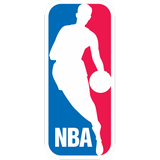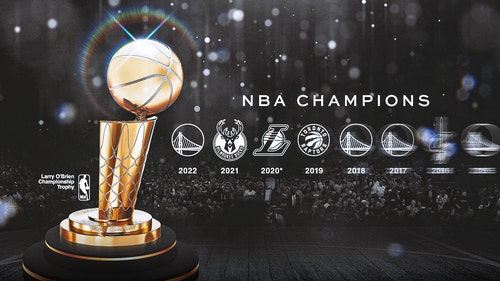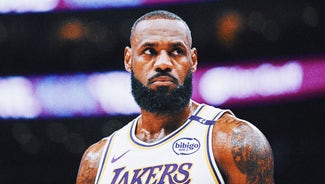
Small or tall: Should the Orlando Magic embrace smaller lineups?
The Orlando Magic have experimented with a smaller lineup in the last few weeks. It has shown some promising results and could get future consideration.
At a time when the majority of teams in the NBA are embracing small ball, the Orlando Magic continue to buck the trend by playing what can only be described as “big ball.”
Orlando went with this unique approach back in the summer with the additions of Serge Ibaka, Bismack Biyombo and a new head coach in Frank Vogel. Vogel made his name with a top-heavy Indiana Pacers team defined by the length and strength of David West and Roy Hibbert.
Orlando’s roster already featured center Nikola Vucevic and forward Aaron Gordon – a pairing that enabled the Magic to play small for much of last season. But the franchise’s decision-makers appeared to be of the opinion more size would ultimately result in more wins.
But the moves have resulted in fewer wins — the Magic had 20 wins at this point last year, compared to 18 this year.
While this is far from a huge step back, the team was supposed to be more experienced and more competitive this year. They were supposed to be tougher and better defensively. They were supposed to make a playoff push.
In reality, the team lacks shape, cohesion and a true sense of identity. The team did not take the expected step forward.
But size is far from the only reason for this, as the first half of the season has proved.
After 45 games Orlando has an offensive rating of 103.6 (27th in the NBA), a defensive rating of 108.9 (19th in the NBA) and recently completed a west coast road trip that saw it go 1-5.
After the team’s final loss of that road trip – to the New Orleans Pelicans on Wednesday – Josh Robbins of the Orlando Sentinel discussed size with Frank Vogel, saying “Small-ball lineups, like the one the Pelicans employ, give the Magic fits.”
“They’re giving everybody fits. Nobody in the league can guard anyone. The number-one [defensive] team in the league is averaging 101 points per [100 possessions]. That’s five points off last year’s leader, OK? It’s a challenge. And tonight we weren’t anywhere [near] good enough. We didn’t respect their shooters, and their non-shooters got hot.”
That got proved again when Jabari Parker scored 19 of his 25 points in the first half sending Serge Ibaka effectively to the bench. Ibaka played just 22 minutes in Friday’s game against the Milwaukee Bucks.
While Vogel is right about the drop off in defensive efficiency around the league, Vogel told John Denton of OrlandoMagic.com earlier in the road trip he planned to counter the small lineups opponents were throwing at the Magic by experimenting with some new rotations as recently as last week.
“We’ll probably play less big/big lineups than we had been playing,’’ he said. “Part of the reason, I think, that we haven’t been able to get over the hump is trying to force that maybe a little too much. So we’ll play more spread lineups with Jeff Green at (power forward).”
As Denton pointed out in his article about the changes the Magic made moving Jeff Green to the 4, the Magic have had some success when playing Nikola Vucevic, Serge Ibaka, Aaron Gordon, Evan Fournier and Elfrid Payton together.
That group has totaled approximately 218 minutes on the floor together, making it Orlando’s most frequently used lineup. Per 100 possessions, the group is outscored by 3.6 points per 100 possessions.
The most successful lineup that has played significant minutes has played just 65 minutes together and is identical to the first, except D.J. Augustin replaces Elfrid Payton. This group outscores opponents by 18.4 points per 100 possessions.
Fournier’s extended absence means neither of these groups has seen much action of late. But just looking at the list of combinations Orlando has used makes it clear Vogel prefers to have at least two bigs on the floor most of the time.
His most commonly used ‘small’ lineup features D.J. Augustin, C.J. Watson, Mario Hezonja, Jeff Green and Bismack Biyombo. This group has played just more than 49 minutes together and gets outscored by 1.4 points per 100 possessions. This group, predictably, takes more outside shots too.
There is another group that uses Gordon and Green as the forwards, in addition to Payton, Meeks and Vucevic, that outscores opponents by 8.6 points per 100 possession.
While this is marginal, this group does a great job of getting to the free throw line, while also crashing the offensive boards more effectively. This group has, however, played just more than 24 minutes together this season, making it coach Vogel’s 17th most used combination.
One of the big problems he has is finding ways of consistently featuring three of Orlando’s top five most effective offensive pieces (Ibaka, Vucevic and Gordon) in the lineup, without overloading the top end.
That said, the three of them have played approximately 404 minutes together in total, helping the team to outscore opponents by 0.9 points per 100 possessions. And when they are on the floor together, Orlando posts positives across the board, including in three-point percentage (+0.68), rebounds (+1) and assists (+5.3).
This group was used to good effect in Friday’s win over the Bucks. Along with Payton and C.J. Watson, they were part of the team’s most effective 5-man combination, which contributed 37 points in just 17.7 minutes of playing time.
And their effectiveness is unsurprising, as all three are versatile, quick to get up and down the court and spread the floor fairly well – as the requirements of small ball dictate.
While they may hold the key to Orlando’s short-term success (especially with the trade deadline looming), mixing it up more on the court by embracing some smaller combinations may be the key to something more sustainable.
And at this stage, what harm can it do?
Clearly, it has had some success and deserves some continued examination. The question becomes whether it will become permanently part of the Magic’s present and future.
More from Orlando Magic Daily
This article originally appeared on









